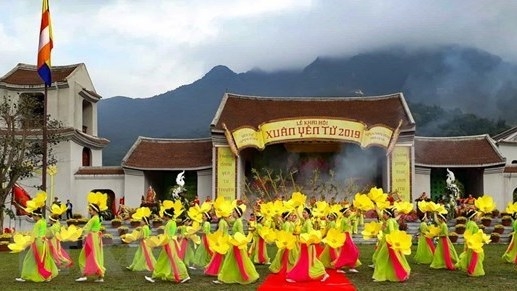


|
|
|
|
Apart from art programmes, visitors at the festival can
participate in folk games such as cock fighting, tug of war, "con” (cloth
ball) throwing and chess, said Le Minh Quang, head of the Division of Culture
and Information of Uong Bi city.
In the days ahead of the festival, roughly 150,000 tourists
visited Yen Tu Mount, up 25% year-on-year, according to the official.
Yen Tu Mountain is located around 50 kilometres from Ha Long
city. The area has awe-inspiring scenery, surrounded by ancient pagodas and
hermitages.
Tran Nhan Tong (1258-1308), the third King of the Tran Dynasty
(1225-1400), ascended to the throne when he was just 21 years old. He was
famed for defeating thr Mongol invaders twice during his 15-year reign.
The king abdicated when he was 35 and spent the rest of his life
on Yen Tu Mountain practicing and propagating Buddhism. He founded the first
Vietnamese School of Buddhism called "Thien Tong” or Truc Lam Yen Tu Zen on
the 1,068m-high Yen Tu Mountain. The 20,000ha site is considered the capital of
Vietnamese Buddhism.
Yen Tu became a major Buddhist Centre and King Tran Nhan Tong
became its first leader under the religious name Dieu Ngu Giac Hoang Tran
Nhan Tong. He ordered the construction of hundreds of religious buildings on
Yen Tu Mountains for teaching and following a religious life.
Yen Tu was officially listed as a special national relic site in
September 2012.
|
Source: NDO